plane

 My grandson, Caalab Royce is a hard worker, who is also very loyal. He stayed at a job he had at Red Robin in Bellingham, Washington, much longer than he really wanted to, but every time he considered quitting, they gave him a raise. So, he stayed and he did a good job for them. Nevertheless, eventually that was not going to be enough, so when he was offered a job as an apprentice in the HVAC industry, he told Red Robin goodbye. I know they were very sad to see him go, as he had been their best worker, but they could see the value in what he was going to do, and they wished him well.
My grandson, Caalab Royce is a hard worker, who is also very loyal. He stayed at a job he had at Red Robin in Bellingham, Washington, much longer than he really wanted to, but every time he considered quitting, they gave him a raise. So, he stayed and he did a good job for them. Nevertheless, eventually that was not going to be enough, so when he was offered a job as an apprentice in the HVAC industry, he told Red Robin goodbye. I know they were very sad to see him go, as he had been their best worker, but they could see the value in what he was going to do, and they wished him well.
Caalab loves his new job, and who can blame him, really. Yes, the work is hard, but they spend a lot of time on the islands around the Pacific Northwest, and since ferry rides to work are a rather slow-go, the crew usually flies to the job once the trucks are there. Many jobs take several days, so the first day, the trucks and equipment are taken to the site, and after that, the crew flies in each day, over the beautiful island views. So…how’s your commute? I know Caalab’s commute is a lot of fun, and I wish I could ride along just once. Caalab has sent me videos of his commute, and it is just beautiful. He spends a lot of time at Friday Harbor, which is one of my favorite places among the islands there. Of course, I go as a tourist, and have time to spend doing what I like, including whale watching, but he goes to work, so it is different, but he has sent pictures of the amazing views too, so it doesn’t seem like he has it too tough.
Caalab has always had a way with animals, including wild animals. Once at my house, a squirrel climbed up his pant leg and continued toward his shoulder…until Caalab’s face appeared, and the squirrel realized what he was doing. He ran away very quickly then. Recently, when the crew arrived at the job site, the men saw a bird with a string wrapped around it’s wing. The bird was in real trouble. The guys caught the bird and removed the string. Afterward, the bird wasn’t in a real hurry to leave, and it sat on Caalab’s hand for about 5 minutes, until 
 Caalab tossed it into the air and it flew away. It was as if the bird wanted to stay for just a few minutes to say, “Thank you, for saving my life.” It was a really special moment for Caalab, who said it was “straight out of a movie.”
Caalab tossed it into the air and it flew away. It was as if the bird wanted to stay for just a few minutes to say, “Thank you, for saving my life.” It was a really special moment for Caalab, who said it was “straight out of a movie.”
Of course, Caalab isn’t all about his job either. These days, he is “all about Chloe!!” Chloe Foster is the love of his life, and such a sweet girl that everyone can see why he loves her. Everybody has that one person who is just perfect for them, and Chloe is Caalab’s “just perfect” one. He will be the first to tell you that she “completes him” and anyone who knows them can clearly see that it’s true. It seems to me that Caalab flies to work, and floats home. It’s a great commute, wouldn’t you agree? Today is Caalab’s birthday. Happy birthday Caalab!! Have a great day!! We love you!!

 My brother-in-law, Mike Reed is becoming quite the rancher. A few years back, Mike and my sister, Caryl bought a ranch west of Casper, and started fixing it up. It was…a process, to say the least. The ranch had been a sheep ranch, and had a huge complex that was used for birthing lambs. Since Mike and Caryl were not going to raise sheep, and because of the disrepair of the complex, they had to be demolished and removed. Since that difficult job, Mike and Caryl have been working very hard to get their ranch ready for their future retirement plans. They are boarding horses, and they have a ranch hand who lives on the ranch and takes care of things, since they are currently still living in Rawlins, and coming to Casper for the weekends. The have been building a house and a barn, and this weekend, they are putting together side roll wheels for irrigation, as they continue to get ready for the hay field they are planning to plant. They are becoming real ranchers, in every way. It is one among several of the new chapters in their lives.
My brother-in-law, Mike Reed is becoming quite the rancher. A few years back, Mike and my sister, Caryl bought a ranch west of Casper, and started fixing it up. It was…a process, to say the least. The ranch had been a sheep ranch, and had a huge complex that was used for birthing lambs. Since Mike and Caryl were not going to raise sheep, and because of the disrepair of the complex, they had to be demolished and removed. Since that difficult job, Mike and Caryl have been working very hard to get their ranch ready for their future retirement plans. They are boarding horses, and they have a ranch hand who lives on the ranch and takes care of things, since they are currently still living in Rawlins, and coming to Casper for the weekends. The have been building a house and a barn, and this weekend, they are putting together side roll wheels for irrigation, as they continue to get ready for the hay field they are planning to plant. They are becoming real ranchers, in every way. It is one among several of the new chapters in their lives.
Recently, they decided to buy a Trike, and they have found that they really enjoy their outings. They joined with some friends, including Mike’s brother, Shawn and his wife Tia for a 300 mile poker run from Saratoga, Wyoming through the Snowy Mountains, into Laramie, Wyoming, then back to Saratoga via Walden, Colorado and Riverside, Wyoming. They had a really great time. In fact they had so much fun that they have made plans over Labor Day to take a trip up to Red Lodge, Montana.
Mike is a avid hunter, and he has made several trips to hunt, including Canada, Alaska, and Africa. Mike is getting ready to take another hunting trip to Alaska in September with his good friend, Scott Penman, to hunt Alaskan Moose. This trip will be what is called a drop hunt, which means that the plane lets them off at a camp 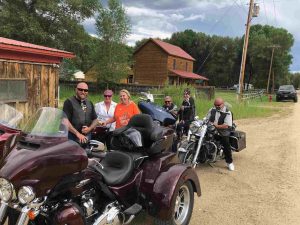
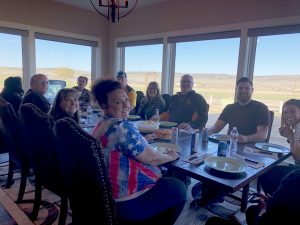 spot and then leaves them there on their own. Then it comes back for them later. Mike is pretty excited about this hunt, and according to my sister, he’s been gathering everything together for months!! I don’t know, maybe he’s a little excited!! I’m sure the guys will have a great time, and I hope their hunt is successful. These kinds of trips really get Mike’s adrenalin going. Today is Mike’s birthday. Happy birthday Mike!! Have a great day!! We love you!!
spot and then leaves them there on their own. Then it comes back for them later. Mike is pretty excited about this hunt, and according to my sister, he’s been gathering everything together for months!! I don’t know, maybe he’s a little excited!! I’m sure the guys will have a great time, and I hope their hunt is successful. These kinds of trips really get Mike’s adrenalin going. Today is Mike’s birthday. Happy birthday Mike!! Have a great day!! We love you!!

 My sister-in-law, Brenda Schulenberg is a woman who is determined to accomplish her goals and dreams. She doesn’t let anything get in the way of getting her daily steps in, whether it is bicycling steps or foot steps, she reaches her goal of 25,000 steps a day…every day. If that means she gets up at 4:00 am to get to work at 8:00 am, then she does. Nothing gets in the way of her step count. At night, if she has been traveling during the day, and is a little behind in her steps, she simply doesn’t sit down until she finishes the steps. That means walking around her house for as long as it takes. Any place can be a trail, as long as you have room to walk around. Trails aren’t always outside, and Brenda utilizes any space necessary to complete her daily steps.
My sister-in-law, Brenda Schulenberg is a woman who is determined to accomplish her goals and dreams. She doesn’t let anything get in the way of getting her daily steps in, whether it is bicycling steps or foot steps, she reaches her goal of 25,000 steps a day…every day. If that means she gets up at 4:00 am to get to work at 8:00 am, then she does. Nothing gets in the way of her step count. At night, if she has been traveling during the day, and is a little behind in her steps, she simply doesn’t sit down until she finishes the steps. That means walking around her house for as long as it takes. Any place can be a trail, as long as you have room to walk around. Trails aren’t always outside, and Brenda utilizes any space necessary to complete her daily steps.
Brenda spent much of her life overweight and really unhealthy, and while most people wouldn’t want me to talk about that part of their lives, Brenda uses that part of her life, and the transition she has made to be an inspiration to others. She has set another goal for herself…to reach out to other people who are where she was…to let them know that it is never too late to change your life for the better. Getting healthy and fit is just a step away. Yes, it will take many steps, but the first step is the most important, because without the first step, you remain an overweight, unhealthy, couch potato. Of course, that first step…must be taken every day, if you are going to have to succeed. Most people when they get to that place, where their weight is out of control, and they have become unhealthy, decide that because of this health problem or that health problem, it is simply impossible for them to lose weight and become healthy again. Brenda is proof positive that they can. All it takes is much determination and that first step.
These days, Brenda enjoys things like traveling…by plane, train, or automobile. These are things she really couldn’t do before she lost the weight. She was so limited. Now she travels to different areas around Wyoming 
 and Colorado to speak to others about her story. Sometimes, all it takes to get someone started on the road to better health, is to see that someone else made it. Getting started is so hard, especially when you feel like you will never make it, but when you see someone like Brenda, who has turned her whole life around, you begin to feel like you can do it too. And that is what inspires Brenda…helping other people to succeed. Today is Brenda’s birthday. Happy birthday Brenda!! Have a great day!! We love you!!
and Colorado to speak to others about her story. Sometimes, all it takes to get someone started on the road to better health, is to see that someone else made it. Getting started is so hard, especially when you feel like you will never make it, but when you see someone like Brenda, who has turned her whole life around, you begin to feel like you can do it too. And that is what inspires Brenda…helping other people to succeed. Today is Brenda’s birthday. Happy birthday Brenda!! Have a great day!! We love you!!
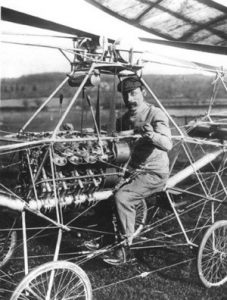 After the Wright brothers discovered a way to make a plane fly, all bets were off as to where the future would take us. It didn’t take very long to find out either. By 1907, a man named Paul Cornu came up with an entirely different type of aircraft, and built the Cornu Helicopter. As most of us know these days, the helicopter is a rotary-wing aircraft that creates its own lift. The Cornu helicopter was an experimental helicopter that was built in France. The craft had an open framework, that obviously didn’t provide much protection from the elements, and so was somewhat limited in when it could fly, but then there are still times when a helicopter can’t fly, so I guess that not much has changed in that respect.
After the Wright brothers discovered a way to make a plane fly, all bets were off as to where the future would take us. It didn’t take very long to find out either. By 1907, a man named Paul Cornu came up with an entirely different type of aircraft, and built the Cornu Helicopter. As most of us know these days, the helicopter is a rotary-wing aircraft that creates its own lift. The Cornu helicopter was an experimental helicopter that was built in France. The craft had an open framework, that obviously didn’t provide much protection from the elements, and so was somewhat limited in when it could fly, but then there are still times when a helicopter can’t fly, so I guess that not much has changed in that respect.
Cornu was a bicycle maker, and so he built his craft around a curved steel tube that carried a rotor at either end, and the engine and pilot in the middle. Power was transmitted to the rotors by a drive belt that linked both rotors and spun them in opposite directions. Control was to be provided by cables that could alter the pitch of the rotor blades, and by steerable vanes at either end of the machine intended to direct the down wash of the rotors. On November 13, 1907, the helicopter was ready for its test flight. The Cornu helicopter is reported to have made a number of short hops, rising perhaps 5–7 feet into the air and staying aloft for something less than one minute…just long enough for Cornu to learn that the control systems he had designed were ineffective. He abandoned the machine soon thereafter. I find it sad to think that, while the design wasn’t going to work in it’s present form, it was certainly not something to give upon. I’m reminded of the old saying, “If at first you don’t succeed…try, try again.” Perhaps, if Paul Cornu had kept trying, he could have succeeded.
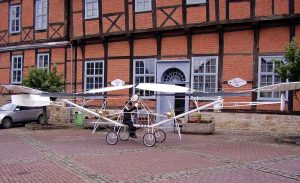 Modern engineering analyses have demonstrated that the Cornu helicopter could not have been capable of sustained flight. The design was flawed, nevertheless, in order to commemorate the centenary of his achievement, a replica of the helicopter was constructed by the École supérieure des techniques aéronautiques et de construction automobile (ESTACA) and presented to the Musée de l’Air et de l’Espace where it was placed on display on December 15, 2007. Another replica was also built. This one by the Hubschraubermuseum Bückeburg (Helicopter Museum of Bückeburg) to pay homage to the merits of Paul Cornu. It has been on display there since November 13, 2007. Though its fight was short, it did fly, after all.
Modern engineering analyses have demonstrated that the Cornu helicopter could not have been capable of sustained flight. The design was flawed, nevertheless, in order to commemorate the centenary of his achievement, a replica of the helicopter was constructed by the École supérieure des techniques aéronautiques et de construction automobile (ESTACA) and presented to the Musée de l’Air et de l’Espace where it was placed on display on December 15, 2007. Another replica was also built. This one by the Hubschraubermuseum Bückeburg (Helicopter Museum of Bückeburg) to pay homage to the merits of Paul Cornu. It has been on display there since November 13, 2007. Though its fight was short, it did fly, after all.
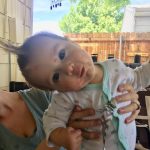
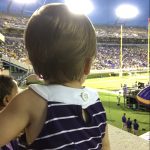 My little grand-niece, Mackenzie Rose Moore is a happy little girl who has much of her mommy’s personality. Mackenzie is the first child of my niece, Lindsay Moore and her husband, Shannon, and they couldn’t be happier if they tried. Mackenzie lives with her parents in Greenville, North Carolina, and so we don’t get to see her very much, but her mommy makes sure we get lots of pictures of her.
My little grand-niece, Mackenzie Rose Moore is a happy little girl who has much of her mommy’s personality. Mackenzie is the first child of my niece, Lindsay Moore and her husband, Shannon, and they couldn’t be happier if they tried. Mackenzie lives with her parents in Greenville, North Carolina, and so we don’t get to see her very much, but her mommy makes sure we get lots of pictures of her.
Mackenzie is usually smiling, and sometimes goofy. She seems to like entertaining her parents with her antics, and loves to pose for pictures. Mackenzie isn’t walking yet…at least not without the security of the furniture in the house. Don’t think that has stopped her from getting into everything, because it hasn’t. She just isn’t too sure about moving away from the furniture yet. She crawls everywhere, and stands up without assistance when she is holding on to a toy or something, and she is fascinated with the refrigerator. Apparently she knows that there is good stuff in there.
Being the daughter of a football coach, makes football a given, and Mackenzie embraces that fanship like a veteran. She enjoys going to her daddy’s football games at East Carolina University, where he is the tight ends coach and recruiting coordinator. She is learning to be his best cheerleader!! And she’s a Pirates fan all the way. And she likes to watch football on television with her daddy too. Of course, anything she is doing with her daddy is fun, according to Mackenzie. The family spent a fun summer going to the pool, camping, and just being together. Her first word was Dada, which I’m sure pleased Shannon, but her favorite word these days is Momma. Nevertheless, rest assured, this baby girl loves her daddy too.
This first birthday has to be a record for unusual birthdays, or at least unusual ways to celebrate a first birthday. Mackenzie had to get out of bed very early yesterday morning, so she and her mommy could get on a plane to fly to Wyoming, because of Hurricane Florence. Greenville, North Carolina is inland from the coast, but 
 this hurricane is set to be a bad one and is expected to stall over the area. If the power is out for several days, it could become miserably hot at their house. So, Mackenzie and her mommy, said goodbye to her daddy, who was getting on a plane for Florida for a game with his team, and off they all went. Mackenzie spent a few weeks with her Grandma and Grandpa Moore this summer, and now gets to see the Hadlock family. Today is Mackenzie’s 1st birthday. It’s a birthday to remember. Mackenzie won’t, but her parents sure will. Happy birthday Mackenzie!! Have a great day!! We love you!!
this hurricane is set to be a bad one and is expected to stall over the area. If the power is out for several days, it could become miserably hot at their house. So, Mackenzie and her mommy, said goodbye to her daddy, who was getting on a plane for Florida for a game with his team, and off they all went. Mackenzie spent a few weeks with her Grandma and Grandpa Moore this summer, and now gets to see the Hadlock family. Today is Mackenzie’s 1st birthday. It’s a birthday to remember. Mackenzie won’t, but her parents sure will. Happy birthday Mackenzie!! Have a great day!! We love you!!
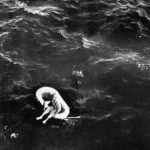 Arthur Duperrault dreamed of sailing the high seas. He was a World War II veteran from Green Bay, Wisconsin and he wanted to give his family a sailing adventure. The winter of 1960 was rough, but now the winter of 1961, would be one of sunlight and warmth. Arthur, Jean, Brian, Terry Jo, and Renee, were heading for the Bahamas to soak up some sun. Arthur and his family headed to Fort Lauderdale, Florida, where their boat, Bluebelle was waiting for them. It was a sixty foot two-masted sailboat.
Arthur Duperrault dreamed of sailing the high seas. He was a World War II veteran from Green Bay, Wisconsin and he wanted to give his family a sailing adventure. The winter of 1960 was rough, but now the winter of 1961, would be one of sunlight and warmth. Arthur, Jean, Brian, Terry Jo, and Renee, were heading for the Bahamas to soak up some sun. Arthur and his family headed to Fort Lauderdale, Florida, where their boat, Bluebelle was waiting for them. It was a sixty foot two-masted sailboat.
With no real sailing experience, Arthur hired a man named Julian Harvey, who was a decorated Air Force bomber pilot who had served in World War II and the Korean War, to captain for him. Harvey brought along his wife of four months, Mary Dene. On Wednesday, November 8, 1961, Arthur, Julian, and their respective families began their journey. Soon, the occupants of Bluebelle would be in the Bahamas. First, Harvey steered Bluebelle toward Bimini, a miniature island chain. Then headed east, to Sandy Point, a village located on the southwest point of the Great Abaco Island. Here, the vacationers filled their days with snorkeling and picking up shells on the beautiful beaches.
On Sunday, November 12, 1961, Arthur and Julian went to the office of Roderick Pinder, who was Sandy Point’s commissioner, to fill out the forms that they needed to properly leave the Bahamas. Arthur told Roderick. “We’ll be back before Christmas.” Little did Arthur, his wife, or three children know, they would not be coming back for Christmas. Sunday would be Arthur’s last night alive. It would also be last night alive for Jean, Brian, Renee, and Julian Harvey’s wife, Mary Dene. Sunday dinner was cooked by Mary Dene, who made a chicken cacciatore and salad for the two families. At 9:00 pm that night, Terry Jo went to bed. Her room was in a small cabin in the back of the boat. Usually, Renee, her young sister, slept there too, but tonight, she was with her mom, dad, and brother in the cockpit. In the middle of the night, Terry Jo heard her brother scream, “Help, daddy, help!” The screams were followed by running and stamping noises. Terry Jo was terrified. After the running, the stamping, and the screams stopped, there was an eerie silence.
Terry Jo was terrified, but found the courage to leave her cabin. The main cabin, a kitchen and dining room during the day, transformed into a bedroom at night. There she saw her mom and big brother, in a pool of blood…dead. Cautiously, she went to check the other areas of the boat. Near the cockpit, she saw more blood and a knife. She made her way to the front of the boat. As Terry Jo was viewing the horror in front of her, somebody lunged at her. It wasn’t a stranger…it was the captain, Julian Harvey. “Get back down there!” he 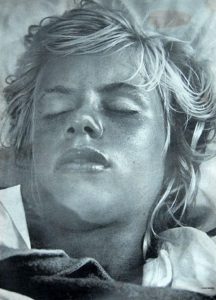 screamed. With her heart pounding, Terry Jo went back to her cabin. She crawled into her bunk. Soon, water coming into the cabin told her that Bluebelle was sinking. She was too afraid to move. However, Harvey was moving all over the place. Soon, she saw Harvey in the doorway holding her big brother’s rifle. Then Harvey turned and walked out of the cabin, and she heard him climb the stairs back to the upper deck.
screamed. With her heart pounding, Terry Jo went back to her cabin. She crawled into her bunk. Soon, water coming into the cabin told her that Bluebelle was sinking. She was too afraid to move. However, Harvey was moving all over the place. Soon, she saw Harvey in the doorway holding her big brother’s rifle. Then Harvey turned and walked out of the cabin, and she heard him climb the stairs back to the upper deck.
With water reaching the top of her mattress, Terry Jo knew she had to get out. Wading through the water, she climbed to the deck again. On deck she saw that the ship’s dinghy and rubber life raft were floating beside the boat. “Is the ship sinking?” she called out. “Yes!” Harvey shouted, coming up from behind her. He pushed the line to the dinghy into her hands. “Hold this!” he shouted. Numb from shock, Terry Jo let the line slip through her fingers. The dinghy slowly drifted away from the sinking Bluebelle. Harvey jumped overboard to catch it, and Terry Jo watched him swim after the dinghy and disappear into the night. She remembered the cork life float that was kept lashed to the top right side of the main cabin, which was now just barely above-water. She scrambled to the small, oblong float and quickly untied it. Just as the float came free, the boat deck sank beneath her feet. She pushed the float into the open water, and climbed onto the float. One of its lines snagged on the sinking ship. For a moment, she and the float were pulled underwater as the Bluebelle went down. Then the line came free, and they popped back to the surface. She huddled low on the float, afraid that the captain might be coming back. She had no water, no food, and nothing to protect her from the cold. The night was so dark that she couldn’t see anything.
For three days Terry Jo was battered by the salt water, and scorched by the sun…her only companions, a pod of porpoises. She had no food or water. Each day brought her closer to death. On Tuesday, a small red plane circled overhead. She waved at it for a long time with her blouse. The plane passed directly over her, but at an angle that made it impossible for the pilots to see her. When the sun rose on Thursday, she did not feel its burning rays. She was in a deep sleep close to death. Only the faintest spark of life was left. About midmorning she emerged from her stupor and opened her eyes. A huge shadow loomed above her like a great beast. Its rumble was so deep that she could feel its pounding rhythm in her chest. It seemed like a dream, until she looked up to the top of that great wall, and saw heads and waving arms. She could hear voices shouting. Finally, she felt herself lifted from the water. She passed out again. Terry Jo spent 11 days in a Miami hospital but had no permanent injuries
The day after the Bluebelle went down, an oil tanker spotted Harvey. When the captain pulled the tanker closer, he yelled, “My name is Julian Harvey. I am master of the Bluebelle.” In the days that followed, Harvey told the Coast Guard in Miami that he was the sole survivor of a grave accident. In the middle of the previous night, he said that a sudden squall damaged the sailboat. His wife, Mary Dene, and the Duperraults were injured when the masts and rigging collapsed. Gas lines in the engine room ruptured, and the ship caught fire as it sank. Harvey said he had managed to get in the dinghy, but tangled rigging trapped everyone else on board. A few days later, staying at the Sandman Hotel, Harvey heard that Terry Jo had survived. The next day, a maid at the hotel found Harvey’s bloody, lifeless body on the floor. He had killed himself.

A week after her rescue, officials questioned Terry Jo in her hospital bed. Her story, disproved Harvey’s account. Her father, mother, brother, and younger sister, along with Mary Dene Harvey, had been slaughtered aboard the Bluebelle, at the hands of Julian Harvey. The police suspect that Harvey killed his wife to collect money from her life insurance, and one theory suggests that Duperrault caught Harvey in the act, prompting the other murders. Terry Jo returned to Green Bay to live with her father’s sister and three cousins. When she was 12, she changed her name to Tere. Nearly 50 years later, in 2010, Tere finally revealed the details of the night her family was killed and her days spent drifting in open water in her book, Alone: Orphaned on the Ocean.
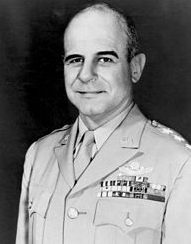 Most of us think very little about piloting a plane. We leave that to the professionals, but how did they get to be professionals? How did they learn all the techniques that they now use every day? Of course, that is a story that is far to long to write here, but suffice it to say that there was a lot of trial and error, a lot of visionaries, and a lot of test pilots who were willing to lay it on the line for progress. Test pilots suffered everything from failure to death in their quest for victory. Eventually they would go on to pave the way for so much innovation, that today, air travel is a commonplace thing, available to almost everyone.
Most of us think very little about piloting a plane. We leave that to the professionals, but how did they get to be professionals? How did they learn all the techniques that they now use every day? Of course, that is a story that is far to long to write here, but suffice it to say that there was a lot of trial and error, a lot of visionaries, and a lot of test pilots who were willing to lay it on the line for progress. Test pilots suffered everything from failure to death in their quest for victory. Eventually they would go on to pave the way for so much innovation, that today, air travel is a commonplace thing, available to almost everyone.
One such innovator, was Jimmy Doolittle. Prior to 1929, planes either had to be rerouted, or not fly in bad weather or limited visibility, but Doolittle was sure that there was a way to fly blind…and land safely. Now he just had to prove it. Until 1929, the only way to fly or land was by sight…known as VFR (Visual Flight Rules). These days pilots know that even if they can’t see, they can still fly safely using the instruments…known as IFR (Instrument Flight Rules).
I’m sure that someone had the idea in their head, that such a thing was possible, with no way to figure it out, but Doolittle was about to make his most important contribution to aeronautical technology…the development of instrument flying. Doolittle realized that true operational freedom in the air could not be achieved unless pilots developed the ability to control and navigate aircraft in flight, from takeoff to landing, regardless of the range of vision from the cockpit. It was an amazing unheard of idea. Doolittle believed that a pilot could be trained to use instruments to fly through fog, clouds, precipitation of all forms, darkness, or any other type of poor visibility. He also believed that the plane could be landed safely even if the pilot’s motion sense was impared. At that time, the ability to control aircraft was partly about getting beyond the motion sense capability of the pilot. You see, sometimes pilots could become seriously disoriented without the visual cues from outside the cockpit. 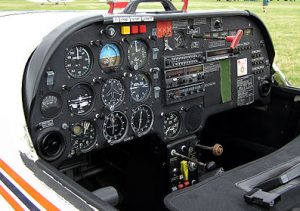
On this day, September 25, 1929, Doolittle would prove his theory, that if a pilot would “trust his instruments” and not his senses, he could safely take off, fly, and land, even if he could not see. Flying blind became a reality when Doolittle took off from and returned to Mitchel Field that September day. He had assisted in the development of fog flying equipment, helped develop, and was then the first to test, the now universally used artificial horizon and directional gyroscope. Of course, the flight made big news and Doolittle was given the Harmon Trophy for conducting the experiment.
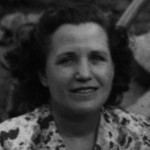
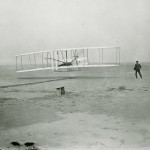 When my great aunt, Bertha Schumacher Hallgren passed way in 1984, much had changed in our world, in comparison to the world she found herself in as a young girl. To me, one of the most significant changes would have been in the area of flight…regular flight or space flight. Bertha was a very curious girl. She thought about things, and thought things through. That is the reason that she included facts of the times in her journal. I do wish she had published her works, because I think they would have been of great interest to a lot of people, even if they weren’t written about their family. The first flight took place when Bertha was just a young girl of four years, so she grew up knowing that flight was possible, but there is no indication in her writings, that she ever flew on a plane. The space program began in 1961, so she saw space flight too, and I’m quite certain that she really thought that was an amazing feat, but it did not make it into her writings either. Perhaps, by that time in her life, she thought that there just wouldn’t be much interest in her writings, aside from possibly her sister, Mina Spare’s daughter, Pauline, and later maybe her grandchildren, who were given a copy of the journal, thereby preserving this amazing book, whether accidental or not.
When my great aunt, Bertha Schumacher Hallgren passed way in 1984, much had changed in our world, in comparison to the world she found herself in as a young girl. To me, one of the most significant changes would have been in the area of flight…regular flight or space flight. Bertha was a very curious girl. She thought about things, and thought things through. That is the reason that she included facts of the times in her journal. I do wish she had published her works, because I think they would have been of great interest to a lot of people, even if they weren’t written about their family. The first flight took place when Bertha was just a young girl of four years, so she grew up knowing that flight was possible, but there is no indication in her writings, that she ever flew on a plane. The space program began in 1961, so she saw space flight too, and I’m quite certain that she really thought that was an amazing feat, but it did not make it into her writings either. Perhaps, by that time in her life, she thought that there just wouldn’t be much interest in her writings, aside from possibly her sister, Mina Spare’s daughter, Pauline, and later maybe her grandchildren, who were given a copy of the journal, thereby preserving this amazing book, whether accidental or not.
By the time Bertha passed away in 1984, she had seen the first Space Shuttle launch that took place on April 12, 1981. I have to think that she must have been very much amazed that a plane could fly into space, and return to earth again with the ability to land using its own power, to land not by dropping in the ocean, as had 
 always been the case, but rather by landing on a runway, just like a regular plane. Unfortunately, the placement of the Hubble Space Telescope came to pass just six years after Bertha’s passing, on this day, April 25, 1990. I find that particularly sad, because I think she would have loved that. I can picture her watching the news on television just to catch a glimpse of the space that surrounds our own galaxy. And I can picture her look of wonder as she thought about this amazing world of change that we live in. It was a place that always fascinated her, and I know that it did until the day she died.
always been the case, but rather by landing on a runway, just like a regular plane. Unfortunately, the placement of the Hubble Space Telescope came to pass just six years after Bertha’s passing, on this day, April 25, 1990. I find that particularly sad, because I think she would have loved that. I can picture her watching the news on television just to catch a glimpse of the space that surrounds our own galaxy. And I can picture her look of wonder as she thought about this amazing world of change that we live in. It was a place that always fascinated her, and I know that it did until the day she died.
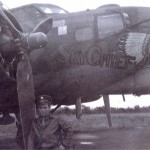 Many times I have written about my Dad’s time in the war, and what he went through, but I’m not sure I truly understood what he went through. Dad never talked about the war much, and maybe that led us to believe that what he went through wasn’t so bad for him. In reality, I don’t think I knew much about Dad’s service time at all. My nephew loaned me a movie called Fortress, and I was very interested in watching it. I don’t know what I expected it to be, but it was not. Everything on the B-17 happened so very fast.
Many times I have written about my Dad’s time in the war, and what he went through, but I’m not sure I truly understood what he went through. Dad never talked about the war much, and maybe that led us to believe that what he went through wasn’t so bad for him. In reality, I don’t think I knew much about Dad’s service time at all. My nephew loaned me a movie called Fortress, and I was very interested in watching it. I don’t know what I expected it to be, but it was not. Everything on the B-17 happened so very fast.
While the movie was quite graphic, and not one that some people would like to watch, it was based on a true story and it gave me a very different perspective about what it was like to fly in a B-17 Bomber. I knew that the life of a ball turret gunner in combat was a mere twenty minutes, and I knew that during the time Dad was on the B-17, there was at least one ball turret gunner who was killed. They tried to save him, but it was not to be. In an instant it was over.

The Flying Fortress, as the B-17 Bomber was called, was one of the safer parts of the war, but that meant nothing when you are flying to a bomb drop and the enemy doesn’t want you to make it. The movie brought home just how hard it was to really spot the enemy planes. They would say that the enemy was right there, and I found myself thinking, “Where?” Then suddenly there they were, and the men on the plane had been firing for several seconds already. It felt like trying to explain how to spot the enemy, and by the time you get the word “well” out, you have already been hit.
While any gunner position was dangerous, I was struck by how exposed the waist gunners were. In case you don’t know, the waist gunners are the guys that shoot out the side doors of the plane. The doors are open, leaving them with very little protection. They had to be on their toes, because the enemy was shooting for their gun, and if they weren’t paying attention, they were shot before they got a second chance to pay attention. That made things really hard, because they also felt a close commraderie with their partner, the other waist 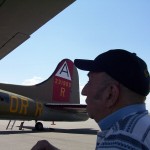 gunner, and if their partner got shot, it was hard to stay on task…but that was hard for any one of the men on the plane.
gunner, and if their partner got shot, it was hard to stay on task…but that was hard for any one of the men on the plane.
Watching the men they worked with every day, get shot and killed became a normal thing. Being normal and being able to cope, are two very different things. These men had to hold it together, while quietly falling apart inside. They knew their friend was dead, and yet they had to do their job. They couldn’t grieve. They couldn’t stop. They had to push that picture of their dead friend way back inside themselves, and do their job. Lives depended on it…including their own. I knew that my dad was on a B-17, but until I watched that movie, I really didn’t understand all of what that meant.
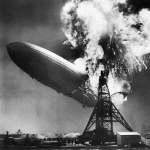 Through the years, or at least since the dawning of flight, man has tried to build flying machines that are more and more creative. Some of these have had amazing runs, like the B-17 Bomber, which was a World War II era plane, that still flies today. Others, like the Hindenburg, went down in a ball of flames. I don’t think it’s usually easy to predict which ones will succeed and which ones won’t. I seriously doubt that people would have predicted that the Concord would ever have the problems it had, or that the Goodyear Blimp would prove successful, where the Hindenburg failed. Sometimes, it’s all about finding yourself with just the right set of components, or making just one slight mistake…and sometimes, the mistake is more obvious.
Through the years, or at least since the dawning of flight, man has tried to build flying machines that are more and more creative. Some of these have had amazing runs, like the B-17 Bomber, which was a World War II era plane, that still flies today. Others, like the Hindenburg, went down in a ball of flames. I don’t think it’s usually easy to predict which ones will succeed and which ones won’t. I seriously doubt that people would have predicted that the Concord would ever have the problems it had, or that the Goodyear Blimp would prove successful, where the Hindenburg failed. Sometimes, it’s all about finding yourself with just the right set of components, or making just one slight mistake…and sometimes, the mistake is more obvious.
The Hindenburg disaster, which occurred on this day, May 6, 1937, was probably the worst slight mistake in history. The Hindenburg was Germany’s version of the most luxurious way to fly in existence at that time. It was over 800 feet long and with its state of the art Mercedes Benz engine, it flew at 85 miles per hour, and had a range of 8,000 miles. The Hindenburg carried 97 passengers, and made ten successful ocean crossings the year before the disaster. It was Germany’s Nazi government’s symbol of national pride, but it held a secret mistake that, on May 6, 1937, exploded into one of Germany’s biggest failures.
The Hindenburg was filled with seven million cubic feet of Hydrogen. The Germans used Hydrogen because of its maneuverability, even though Helium would have been much safer. The Hindenburg was supposed to arrive in New Jersey at 5:00am on that fateful day, but bad weather delayed its arrival until the later afternoon. Even then, the weather was not ideal. Rain further delayed the docking at Lakehurst. When they were finally cleared to dock, Captain Max Pruss brought the ship in too fast and had to order a reverse engine thrust. At 7:20pm a gas leak was noticed. Within minutes, the tail blew up, sending flames hundreds of feet in the air and as far down as the ground below.
The chain reaction that followed caused the entire vessel to burst into flames. There were nearly 1,000 spectators awaiting the arival, who could feel the heat of the fire from a mile away. Those on the Hindenburg 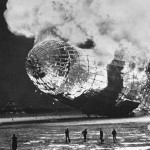 tried to jump. Some tried to jump to the docking cables, and when they fell, they were killed or critically injured. Others tried to jump as they got closer to the ground. Many were critically burned. In all 36 people lost their lives, while 56 managed to survive. Probably the main reason this crash has stayed in the minds of people over the years is that there were so many cameras to document the event. The photographs have become well known. Announcer Herbert Morrison, on WLS radio gave an unforgettably harrowing live account of the disaster, “Oh, oh, oh. It’s burst into flames. Get out of the way, please . . . this is terrible . . . it’s burning, bursting into flames, and is falling . . . Oh! This is one of the worst . . . it’s a terrific sight . . .oh, the humanity.” This truly was a disaster of monumental proportion, and it will never be forgotten.
tried to jump. Some tried to jump to the docking cables, and when they fell, they were killed or critically injured. Others tried to jump as they got closer to the ground. Many were critically burned. In all 36 people lost their lives, while 56 managed to survive. Probably the main reason this crash has stayed in the minds of people over the years is that there were so many cameras to document the event. The photographs have become well known. Announcer Herbert Morrison, on WLS radio gave an unforgettably harrowing live account of the disaster, “Oh, oh, oh. It’s burst into flames. Get out of the way, please . . . this is terrible . . . it’s burning, bursting into flames, and is falling . . . Oh! This is one of the worst . . . it’s a terrific sight . . .oh, the humanity.” This truly was a disaster of monumental proportion, and it will never be forgotten.

